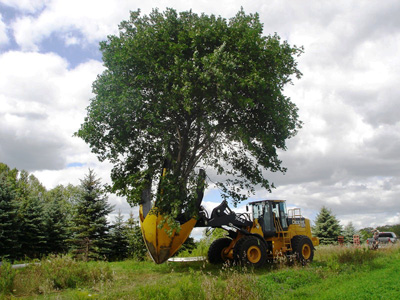
Whenever possible, allow vegetation to remain undisturbed throughout
site development and occupancy. If trees must be removed, take
necessary measures to reestablish the tree in an alternate location.
While tree removal and replanting increases landscaping costs, the
benefits often outweigh the expenses. Some benefits of tree reuse
include:
Trees are not always relocated to create more space for
development.
Rain gardens and/or
heat island mitigation are examples of
tree reuse employed for function rather than necessity.
Careful steps need to be taken by qualified individuals in order
to promote the survival of a tree during and after the removal and
replanting process. Some species of trees tolerate the process
better than others. As a general rule, trees with extensive, deep
root systems may have more difficulty surviving. Trees should be
moved during the preliminary phases of project development since the
equipment involved is heavy and may damage surrounding vegetation or
even sidewalks.

Figure 1. A tree spade is used for relocating trees.
Tree reuse is a potential strategy to achieve the
intent of LEED
SS Credit 5.1.
Refer to the LEED Guidance section for specific requirements.

|

